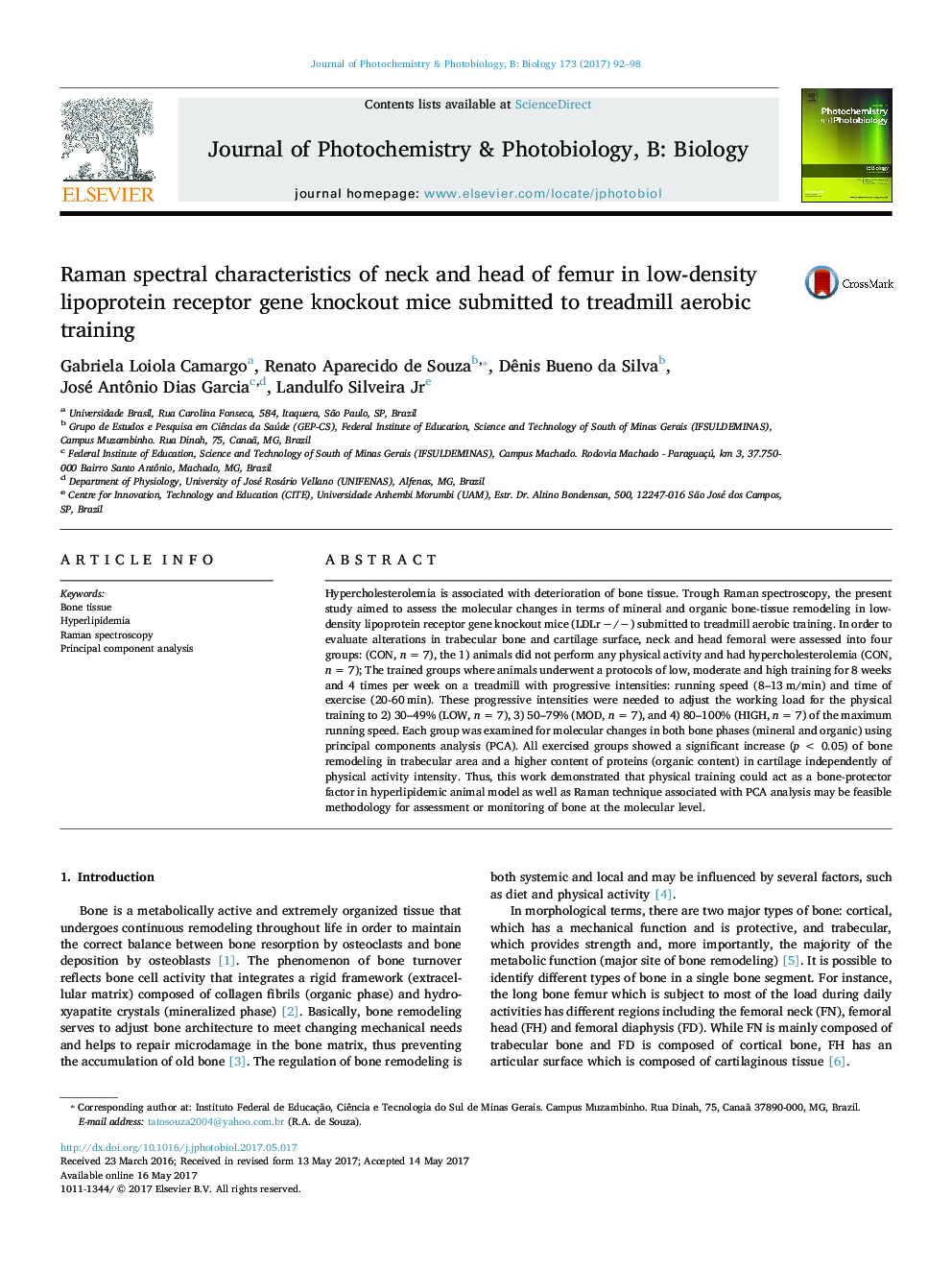| Article ID | Journal | Published Year | Pages | File Type |
|---|---|---|---|---|
| 4754368 | Journal of Photochemistry and Photobiology B: Biology | 2017 | 7 Pages |
â¢Physical training can act as a bone-protector factor in hyperlipidemic animal model.â¢Raman technique associated with PCA is a feasible methodology for monitoring of bone quality.â¢Physical training produces higher remodeling in the trabecular bone.â¢Physical training increased organic content (collagen) in articular surface area.â¢There was high correlations between PC1 score with serum cholesterol and triglycerides.
Hypercholesterolemia is associated with deterioration of bone tissue. Trough Raman spectroscopy, the present study aimed to assess the molecular changes in terms of mineral and organic bone-tissue remodeling in low-density lipoprotein receptor gene knockout mice (LDLr â/â) submitted to treadmill aerobic training. In order to evaluate alterations in trabecular bone and cartilage surface, neck and head femoral were assessed into four groups: (CON, n = 7), the 1) animals did not perform any physical activity and had hypercholesterolemia (CON, n = 7); The trained groups where animals underwent a protocols of low, moderate and high training for 8 weeks and 4 times per week on a treadmill with progressive intensities: running speed (8-13 m/min) and time of exercise (20-60 min). These progressive intensities were needed to adjust the working load for the physical training to 2) 30-49% (LOW, n = 7), 3) 50-79% (MOD, n = 7), and 4) 80-100% (HIGH, n = 7) of the maximum running speed. Each group was examined for molecular changes in both bone phases (mineral and organic) using principal components analysis (PCA). All exercised groups showed a significant increase (p < 0.05) of bone remodeling in trabecular area and a higher content of proteins (organic content) in cartilage independently of physical activity intensity. Thus, this work demonstrated that physical training could act as a bone-protector factor in hyperlipidemic animal model as well as Raman technique associated with PCA analysis may be feasible methodology for assessment or monitoring of bone at the molecular level.
